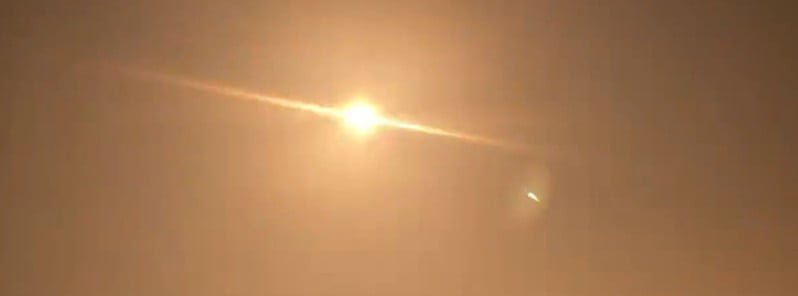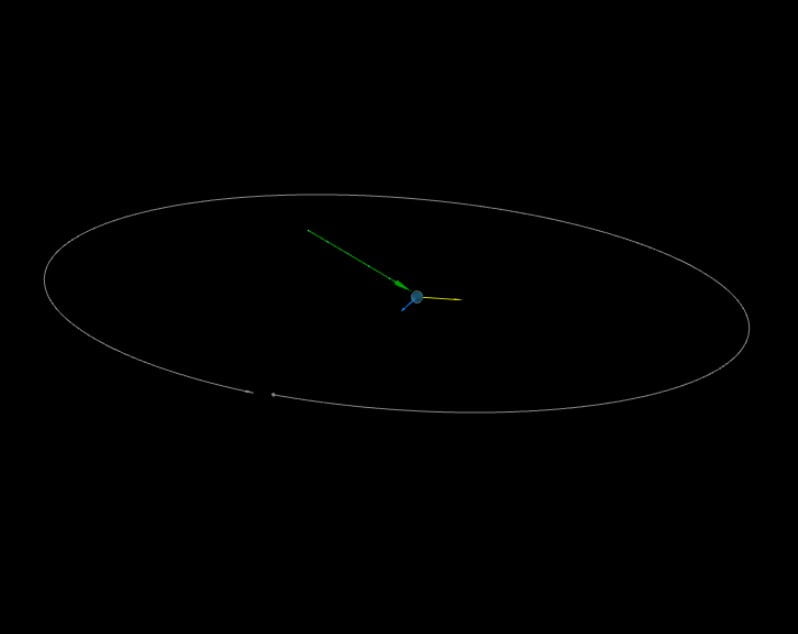Asteroid 2023 CX1 impacts Earth over Europe — the 7th predicted Earth impact on record

A newly-discovered asteroid designated 2023 CX1 impacted Earth over the English Channel between England and France, Europe at 02:59 UTC on February 13, 2023. This small asteroid was discovered just several hours before impact, making it the 7th asteroid to be discovered before impacting Earth.
Asteroid 2023 CX1 is part of the Apollo group of asteroids and had an estimated size ranging from 0.8 to 1.8 m (2.6 to 5.9 feet) in diameter.
This fast-moving object, with a relative velocity of 17.41 km/s, was first observed at GINOP-KHK, Piszkesteto at 20:40 UTC on February 12 and was confirmed by Visnjan Observatory in Croatia at 21:46 UTC. The confirmation came just over 5 hours before impact. The provisional designation of this object was SAR2667.
Although asteroids of this size enter Earth’s atmosphere several times per year, it is rare for them to be detected beforehand.

The object produced a brilliant fireball over the English Channel seen from most of southern England, Wales, France, and neighboring countries.
Thanks to the favorable weather conditions and a 5-hour advance warning, many people were able to venture outside and witness the stunning sight of 2023 CX1 as it entered the Earth’s atmosphere.
The ample notice allowed people to prepare and capture the event, making it a memorable experience for all those who were able to observe it.
The discovery of 2023 CX1 marks the 7th instance of an asteroid being discovered prior to its impact.
The previous 6 asteroids detected before impact are:
- 2008 TC3 – impacted over the Nubian desert, Sudan on October 7, 2008. Discovered on October 6, 2008. Diameter: approximately 4 m (13 feet); Mass approximately 80 tons.
- 2014 AA – impacted over the Atlantic Ocean, 3 000 km (1 864 miles) from Caracas, Venezuela on January 2, 2014. Discovered on January 1, 2014. Diameter: approximately 3 m (9.8 feet); Mass approximately 40 tons.
- 2018 LA – impacted over the Botswana-South Africa border on June 2, 2018. Discovered on June 2, 2018. Diameter: approximately 3 m (9.8 feet); Mass approximately 40 tons.
- 2019 MO – impacted off the south coast of Puerto Rico, the Caribbean Sea on June 22, 2019. Discovered on June 22, 2019. Diameter: approximately 5 m (9.8 feet); Mass approximately 200 tons.
- 2022 EB5 – impacted southwest of Jan Mayen island in the Arctic Ocean at around 21:22 UTC on March 11, 2022. Discovered roughly two hours before impact. Diameter: approximately 3 m (9.8 feet).
- 2022 WJ1 – impacted over Niagara Falls at 08:27 UTC on November 19, 2022. Discovered at 04:53 UTC on November 19. Diameter between 0.5 and 1.2 m (1.6 – 3.9 feet).
All were small space rocks that did no damage when they broke up in our planet’s atmosphere.
References:
Asteroid 2023 CX1 at Minor Planet Center, at CNEOS
Featured image credit: Asteroid 2023 CX1 explodes over the English Chanel on February 13, 2023. Credit: Mega Luigi (@MegaLuigi)

Commenting rules and guidelines
We value the thoughts and opinions of our readers and welcome healthy discussions on our website. In order to maintain a respectful and positive community, we ask that all commenters follow these rules.